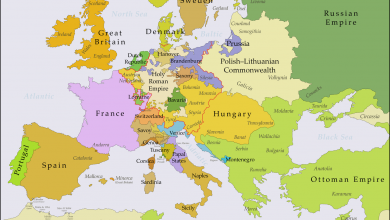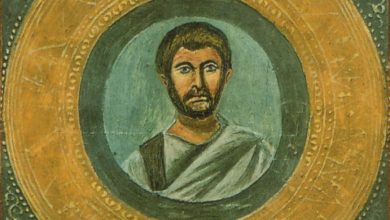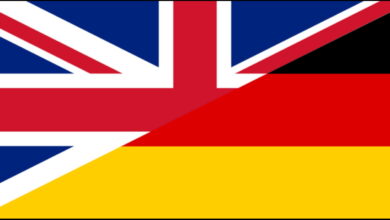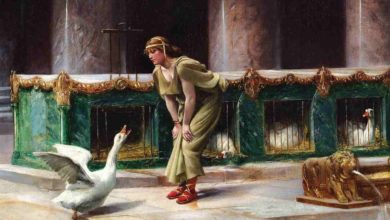When the Dutch unanimously supported a united Europe

In 2005, pro-Europeans from all across the continent wept as their hopes for a European Constitution were crushed. In the space of a week, both the French and the Dutch rejected the proposal in referenda. Following the defeat of the government-backed “Oui” camp in the French referendum, the Dutch delivered the finishing blow to the Constitution by checking the “Nee” option 4.7 million times, as opposed to only 2.9 million votes for “Ja”.
Since then, support for the European Union, and especially for a federal Union, has declined. Further, the arguments used against the constitution can still be heard from Eurosceptics today. The Dutch have not always been as sceptical of Europe, though. In fact, there used to be a time where they almost unanimously supported the concept of a federal European state.
The historical context
The cataclysm of the Second World War had an immeasurable impact in shaping the world as we know it today. Most of Western Europe lay in ruins, dependant on foreign armies for recovery and security. In this context, support for a single European political entity soared: only together could European countries banish the spectre of another war, and to a lesser degree, form a common front against the Soviet Union.
Federalist movements sprung up around the Continent, and national leaders made sure to quickly initiate the process of creating this new European polity. In 1948 the Congress of Europe was held in Maastricht, the Netherlands, laying the foundations for the creation of the Council of Europe. In 1952, the European Coal and Steel Community was created, rendering future Franco-German wars a practical impossibility. The European Defence Community, which was meant to become a European army, also saw light in these years, if only to be shelved in favor of Transatlantic military integration.

Paul-Henri Spaak, one of the founding fathers of the European Union, used his position in the Common Assembly (the precursor of the European Parliament) to establish an Ad Hoc Assembly with the purpose of drafting a European constitution by 1953. One of the main goals of this constitution was to unite the Defense Community and the Coal and Steel Community under a single banner. This new political entity would enjoy control over a European army and all the steel trade and production within (Western) Europe. Another goal was to coordinate a common foreign policy for the partaking countries, establishing the foundation for federal or confederal developments.
The neutralization of the Franco-German rivalry was undoubtedly at the heart of the Coal and Seel Community. With that said, these two countries definitely weren’t the only ones who had a say in what this Constitution was going to look like.
The Dutch pushed for a number of ideas, namely to implement a single electoral system all across Europe, to divide the seats in the European Senate (what is now the European Council) in a way modeled on the US Senate in order to protect the will of the smaller Member States and lastly to integrate Europe into a single economic bloc. Only the latter idea was actually accepted, and this was solely due to Dutch perseverance. “No political integration without further economic integration” would become the motto of the Dutch MPs negotiating in the Assembly. Sadly this wouldn’t lead to true economic integration until the Euro, 40 years later.
The Dutch for Europe
In light of these events the president of the European Movement Netherlands, a pastor by the name of Tjeerd Oeds Hykelma, vowed to organise a referendum on public support for European unity. This referendum wasn’t going to be official, so it couldn’t be held nationwide. Tjeerd thus opted to hold it in two municipalities: Delft, located close to the Hague, and Bolsward, a small Frisian municipality in the north of the country. Previous polls in these two municipalities for the parliamentary election of 1952 turned out to have accurately predicted the outcome of the election, so it made sense to choose these two for this experiment.
Despite the fact that this was no official event, officials did definitely take notice of this referendum and politicians hurried their way from the Hague to these areas to campaign en masse in favour of a united Europe. The politicians were so decisively pro-Europe that after the referendum, the mayor of Bolsward actually apologised for the one-sidedness of the debate, despite the fact that it really wasn’t his fault. The only parties who campaigned against Europe were minor parties on the extreme sides of the left-right spectrum: the Communists and the Dutch Reformed Church.

In the days leading up to the referendum, Delft and Bolsward practically breathed European federalism. Bakeries made special cakes with the green ‘E’ on a white background, tailors made the flag of Europe especially for the occasion. Houses and churches flew the federalist flag, bicycles were decorated with European symbols, and students had to write special essays about Europe.
Reflecting this enthusiastic mobilization, turn-out ratios skyrocketed. 88.2% in Bolsward and 74.8% in Delft, in spite of the heavy rainfall that troubled voters all day long. Supposedly an elderly man slipped and fell on the wet ground as he left the polling station, after which his only reaction was that “it was worth it”. The police and a local technical university even drove around in mobile polling stations to allow bedridden hospital-patients to vote. Europe mattered to people – and not just a little bit.
In Delft 93.1% of the 27 thousand people who had cast their vote, voted in favour of a united Europe. The Frisians managed to be even more Europeanist than their Dutch brethren, as 96.6% of the 3700 Bolswardians voted in favour of uniting Europe.
Quite the contrast with the puny 38.46% of Dutch voters who voted for the European constitution in 2005.





